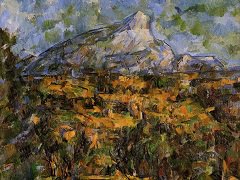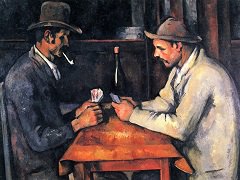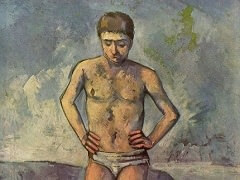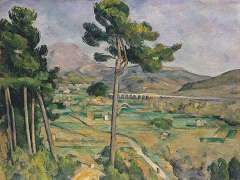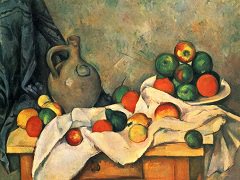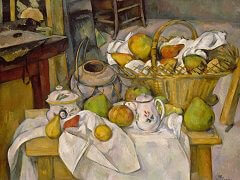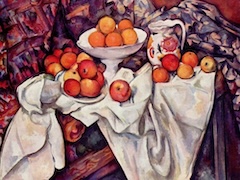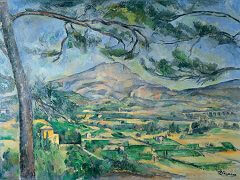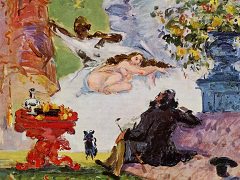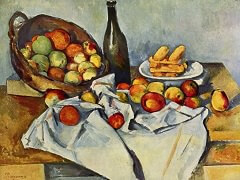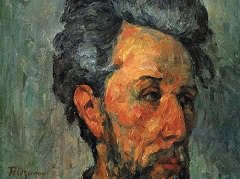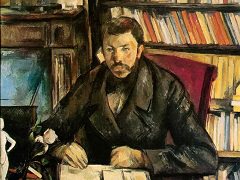The Abduction, 1867 by Paul Cezanne
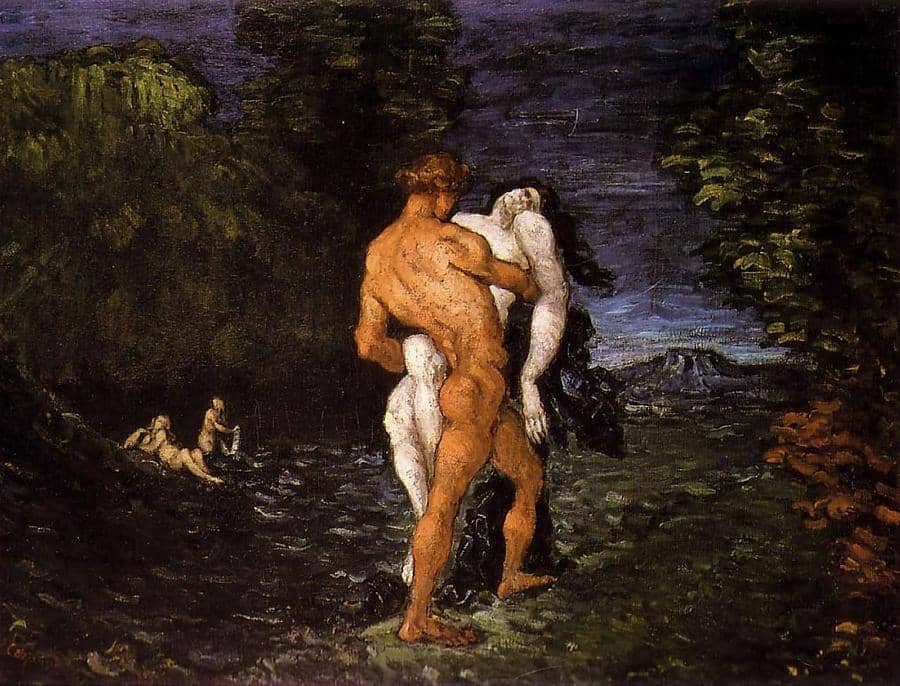
Abduction, rape, and murder: these are themes that tormented Cézanne. Themes of violence, eroticism and romantic fantasy are common in Cézanne's work of around 1866-71. The subject of this painting has been much discussed. One theory identifies the figures as Hercules and Alcestis, whom he has rescued from the Underworld. However, it is more generally believed that it represents the abduction of Proserpine by Pluto, as recounted in Ovid's Metamorphoses.
The Abduction, one of Cézanne's most remarkable early paintings , is impressive largely for its turgid force, held barely under his control. These figure paintings are the most difficult to enter into: they are sinister, with passion in turmoil just beneath the surface.
Cézanne's late studies of the human body are most rewarding, his figures often depicted as bathers merging with the landscape in a sunlit lightness. This became a favorite theme for Cézanne and he made a whole series of pictures on the subject. This mature work is dictated by an objectivity that is profoundly moving for all its seeming emotional detachment.
It was before nature that Cézanne was seized by a sense of the mystery of the world to a depth never expressed by another artist. He saw that nothing exists in isolation: an obvious insight, yet one that only he could make us see. Things have color and they have weight, and the color and mass of each affects the weight of the other. It was to understand these rules that Cézanne dedicated his life.
For the early period the problem of establishing the chronology of Cézanne's work is compounded by the fact that some pieces were destroyed by Cézanne himself, or by his father, which makes an exact analysis difficult. Of the remaining paintings, with the exception of portraits and still-lifes, many are expressively executed in dark colours and inspired by violent, dramatic themes. They are full of exuberance and intensity, and the style is impetuous, the rhythm lively and the paint thick. The serene and subdued vision of Cézanne's final period, in which there is a tendency towards abstraction, is little in evidence in these early works. At this time Cézanne was attempting to forge a personal technique, and the works are therefore quite varied in style.


